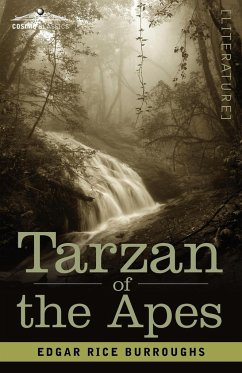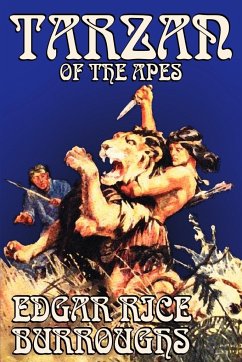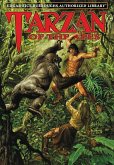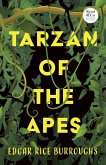From a lofty perch Tarzan viewed the village of thatched huts across the intervening plantation. He saw that at one point the forest touched the village, and to this spot he made his way, lured by a fever of curiosity to behold animals of his own kind, and to learn more of their ways and view the strange lairs in which they lived. His savage life among the fierce wild brutes of the jungle left no opening for any thought that these could be aught else than enemies. Similarity of form led him into no erroneous conception of the welcome that would be accorded him should he be discovered by these, the first of his own kind he had ever seen. Tarzan of the Apes was no sentimentalist. He knew nothing of the brotherhood of man. All things outside his own tribe were his deadly enemies... ¿from Chapter X: ¿The Fear-Phantom¿ Edgar Rice Burroughs created one of the most iconic figures in American pop culture, Tarzan of the Apes, and it is impossible to overstate his influence on entire genres of popular literature in the decades after his enormously winning pulp novels stormed the public¿s imagination. Tarzan of the Apes, first published in 1912, is the first installment of Burroughs¿ tales of the ape-man, which would expand to encompass more than two-dozen books. Here, an English boy orphaned in Africa is raised by apes, becoming a fearsome creature of the jungle until he discovers his true identity as John Clayton, Lord Greystoke, and make his first tentative forays back into human civilization, through his love for the only human woman he has ever seen, Jane Porter. American novelist EDGAR RICE BURROUGHS (1875¿1950) wrote dozens of adventure, crime, and science-fiction novels that are still beloved today, including At the Earth¿s Core (1914), The Beasts of Tarzan (1916), A Princess of Mars (1917), The Land That Time Forgot (1924), and Pirates of Venus (1934). He is reputed to have been reading a comic book when he died.
Hinweis: Dieser Artikel kann nur an eine deutsche Lieferadresse ausgeliefert werden.
Hinweis: Dieser Artikel kann nur an eine deutsche Lieferadresse ausgeliefert werden.








